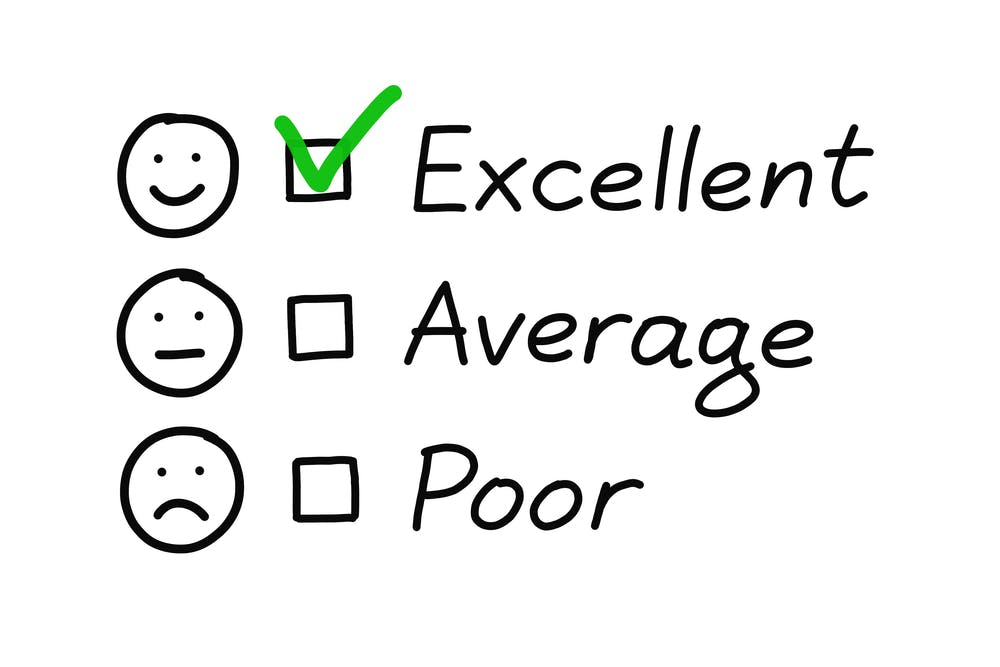Close the door and sit down.
Did your heart just drop? Are you sweating? Is your eye twitching?
Performance reviews can be full of anxiety, uncertainty, negative energy and useless fluff.
Forbes contributor Liz Ryan doesn’t shy away from her opinion:
Performance reviews are the second-worst process in organizations. Every year we shut down our businesses for a month to fill out performance review forms. What a tragic waste!”
Performance reviews don’t have to be a waste of time. An open communication channel between employee and employer should be a resource, not a tedious obligation.
Get around the stigma of boring and anxiety-ridden performance reviews by implementing a lean survey system that makes the process useful, efficient and maybe even…a professional boon for manager and employee!
The Problem
Over half (58 percent) of managers said performance reviews are not an effective use of time. A problem with the run-of-the-mill performance review is lack of focus. Much too often, the critiques are solely placed upon the employee and the “review” parts of review never really happen.
If performance reviews at your organization are all about nitpicking over the last year’s screw-ups, then you’re doing it wrong.
Worse you might not be giving your employees the opportunity to manage up, and that makes for troublesome accountability issues.
What an employee thinks about a manager is just as important in a bilateral work relationship as what the manager has to say about the employee. This is part of the reason 360-degree reviews were created; to give a more holistic point of view around employees AND management.
How to do this
A recent study revealed one-in-five of surveyed employees felt they had an unfair performance appraisal. An on-the-spot question during a review is not the right time to ask for employer feedback. The employee needs time to think and reflect in order prepare for what they want to say. A simple and automated survey can be just the answer.
- Use a tools like Survey Monkey or Google Forms for better data management and ease of use.
- Avoid using paper and pencil, as this doesn’t provide an adequate paper trail (ironic) and can become overwhelming, messy and disastrous if it falls into the wrong hands.
- Keep it short and sweet and leave room for a write-in comment or two. Ask about communication, goals and expectations.
- Tailor it to the department for better targeting and details.
- Ensure there is a place for workplace needs, suggestions, and feedback about the team and management. Need a place to start? Try this performance management survey template.
The timeline you should follow
- A week before review — Send survey to be completed;
- Two days before — Collect reviews and read them;
- One day before — Prep what needs to be addressed and discussed;
- Day of — Run a quick, lean and clean performance review by getting to the point.
- Save 10 minutes toward the end of the review (or 30 percent of total review time if yours are unusually long or short) for employee feedback. Do not allow employees to rush through this or leave early. Make it a priority.
For the employee
Employees want to feel heard; one out of five employees think their bosses don’t think about the appraisal until they’re in the room, and 44 percent of employees don’t think their boss is honest during the performance review process.
One way to avoid having employees feel like they’re part of a useless, pointless process is to read their survey responses and craft replies and feedback. Nothing is more disheartening than responding honestly and thoroughly on something, for the answers to be dismissed.
Step two, jot down a note or two on what specifically you want to bring up in the review. Stay open and talk the issues through to get to the bottom of the problem.
Disclaimer: Don’t get defensive. If you attack employees for what they filled out on the survey, they will never disclose what they truly think ever again.
If you see a pattern emerging with other employees or team members, you will have a better idea of the root of the problem. Not seeing it? Perhaps it’s time to help them see past the perceived issue.
Stay accountable
Great, you got feedback, they got feedback and you were able to talk through your issues during the review. What now? Talk is just talk unless changes are made.
Disclaimer: Beware of the people pleaser. For some, digging to the truth may be looked at as more trouble than worthwhile:
Keep yourself accountable by sending a follow-up survey two months later. Make sure both of you kept up your end of the bargain by asking questions on the follow-through of the issues brought up.
Performance reviews can be a powerful tool used for good. Don’t waste these opportunities by running through the motions. A quick survey can be the facilitator for open and productive communication channels.
